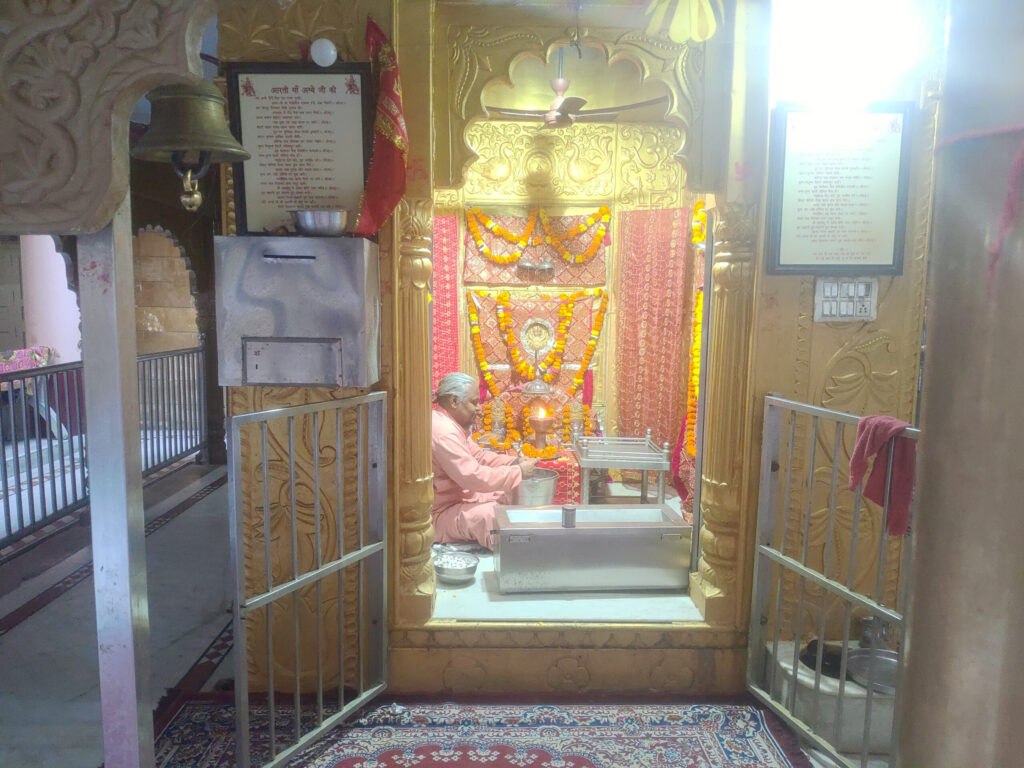Temple Longan Wali Devi

An ancient temple

Longan Wali Devi

An ancient temple

A revered religious site situated near Town Hall, Amritsar. The temple is renowned for the special worship of Mother Jagadamba Ashtabhuji (Eight-Armed Goddess Durga), particularly during both the summer and autumn Navratras. During these auspicious occasions, thousands of devotees from Amritsar and other regions gather to offer prayers to Maa Bhagwati.
The temple has a rich historical and spiritual background dating back to the 18th century.
Rituals and Worship:
Throughout both Navratras, special prayers, including Durgapath and recitations from the Ram-Charit Manas, are conducted for nine consecutive days after the morning aarti. The temple holds aarti three times a day—from 4 AM to 10 AM in the morning and around 8 PM in the evening—attracting devotees who participate with deep devotion, setting aside their daily routines. Apart from Navratras, numerous other religious festivals are celebrated with great enthusiasm.

Baba Longdas Ji Maharaj
Early Life:
Baba Long Das Ji, the founder of Temple Sri Longan Wali Devi, was a disciple of Nirvana Priyatamdas Ji Maharaj. He was born in V.S. 1788 (1731 AD) in Shahjahanpur, Uttar Pradesh, to Shri Ramlal Ji and Ramdevi. His birth brought immense joy to his family, especially as he was born after eight to nine years of marriage, following two elder sisters.
From an early age, Ramdev (his birth name) showed deep interest in religious stories rather than in play or studies. His father, Shri Ramlal Ji, desired for him to engage in activities like other children, but Ramdev remained contemplative and spiritually inclined.
Journey towards Spirituality:
At the age of 20, Ramdev refused to marry despite family pressure and, on Deepawali in V.S. 1804 (1747 AD), left his home in search of spiritual enlightenment. He wandered for years, seeking a true Guru. After five years, he met Tapomurti Nirvana Priyatamdas Ji, who recognized his devotion. In V.S. 1809 (1752 AD), Nirvana Ji accepted him as a disciple, renaming him Longdas. Under his Guru’s guidance, Baba Longdas Ji embraced the indifferent religion and embarked on pilgrimages to the four Dhams—Jagannath, Dwarka, Rameshwar, and Badrinath.
Establishment of the Temple:
Arriving in Amritsar in V.S. 1818 (1761 AD), Baba Longdas Ji initially stayed at today’s Sangal wala akhada place. In V.S. 1820 (1763 AD), he settled in a forested area where the temple stands today, meditating and worshiping Maa Jagadamba.
Baba Longdas Ji first created a clay idol of Maa Jagadamba and enshrined it at the temple’s present location. The iron trident in front of the temple is believed to date back to his time. It is believed that after years of deep penance, Maa Jagadamba appeared before him and blessed him with cloves (“laung”), signifying her divine presence. Since then, the temple has been known as Launga Wali Devi—the goddess who grants cloves. Devotees continue to offer cloves in the temple, believing it fulfills their wishes.
Architectural Features of the Temple
The temple has undergone several renovations over the centuries. Some of its prominent features include:
Main Sanctum (Garbhagriha)
Iron Trident (Trishul)
Temple Well (Baoli)
Four-Walled Structure & Renovations
Major Developments by Successive Mahants
Several Mahants (spiritual heads) have contributed to the temple’s expansion:
Conclusion
Sri Longan Wali Devi Temple stands as a symbol of divine faith, devotion, and historical significance in Amritsar. From its humble beginnings in the 18th century, it has grown into a major religious and spiritual landmark, attracting devotees from across Punjab and India.
The temple continues to uphold its centuries-old traditions, making it a place of peace, faith, and divine blessings. Whether during Navratras or on any regular day, the spiritual aura of the temple remains unmatched, drawing devotees to seek Maa Jagadamba’s blessings and preserving the rich heritage of Hindu devotion in Punjab.